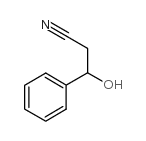| 结构式 | 名称/CAS号 | 全部文献 |
|---|---|---|
 |
3-羟基-3-苯基-丙腈
CAS:17190-29-3 |
| 结构式 | 名称/CAS号 | 全部文献 |
|---|---|---|
 |
3-羟基-3-苯基-丙腈
CAS:17190-29-3 |